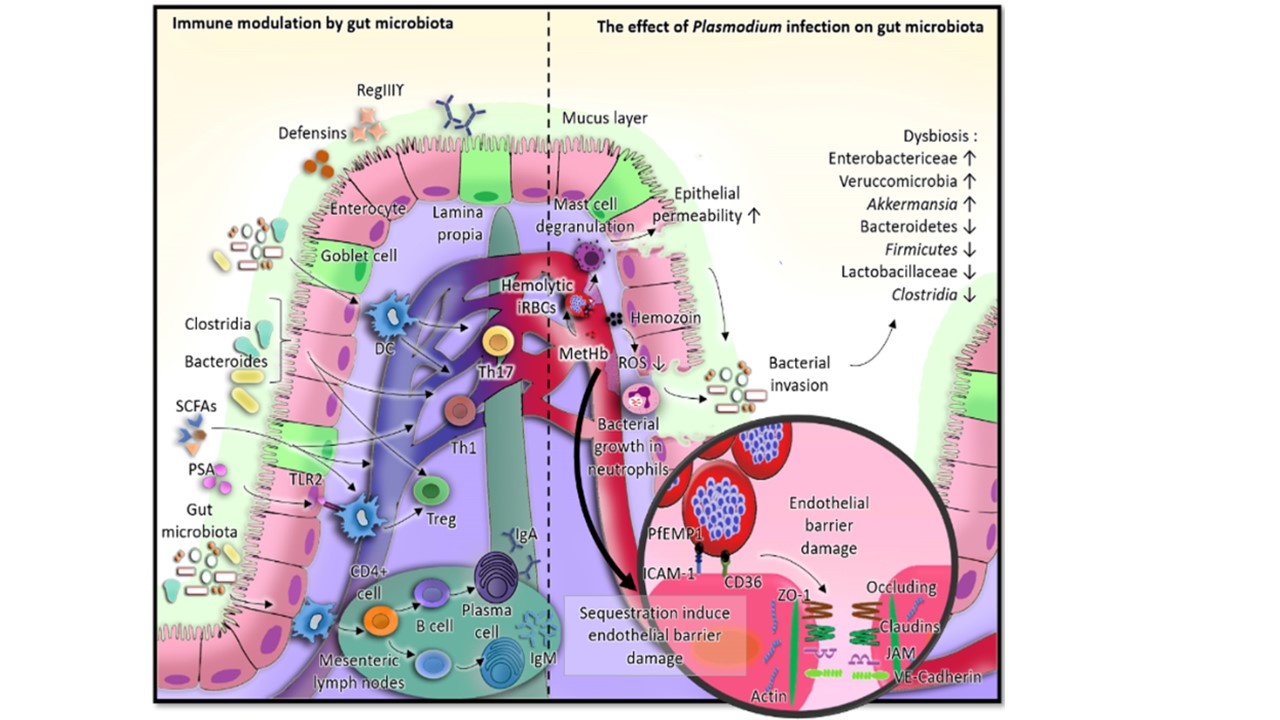During Plasmodium infection, sequestration of infected red blood cells (iRBCs) occurs in various tissues and induce tissue-specific pathologies. Sequestration of IRBC to vascular endothelial cells is mediated by parasite ligands, such as Plasmodium falciparum erythrocyte membrane protein 1 (PfEMP1), and endothelial receptors, including CD36 and intercellular adhesion molecule 1 (ICAM-1). These lead to the disruption of paracellular barrier integrity including vascular endothelial (VE-cadherin), junctional adhesion molecules (JAM), claudins and occludin. The hemolysis of iRBCs cause the release of hemin, methemoglobin (MetHb), Hemoglobin-derived peptides (Hb peptides) and hemozoin. Moreover, due to hemolysis of iRBCs, neutrophils are incapable to produce reactive oxygen species, which then induce microbial growth inside the cells that leads to a shift in gut microbiota composition, including an increase in Enterobactericeae, Veruccomicrobia and Akkermansia, and a decrease in Bacteroidetes, Firmicutes, Lactobacillaceae and Clostridia.
Winaris N, Pawestri AR, Azizah S, Alifia LI, Asiyah R, Ayuningtyas TR, Fitri LE, Sardjono TW. Plasmodium infection and dysbiosis: A new paradigm in the host-parasite interaction. Parasite Immunol. 2023 24:e12980. PMID: 37092310
